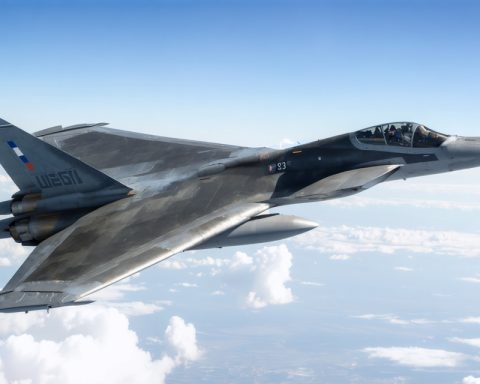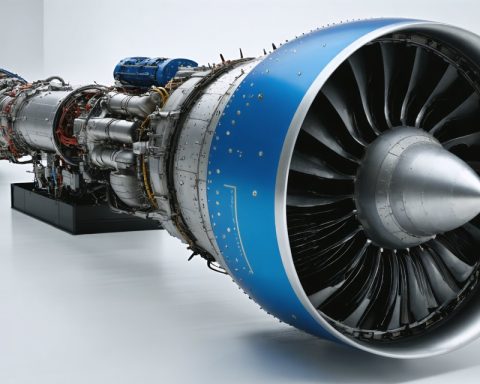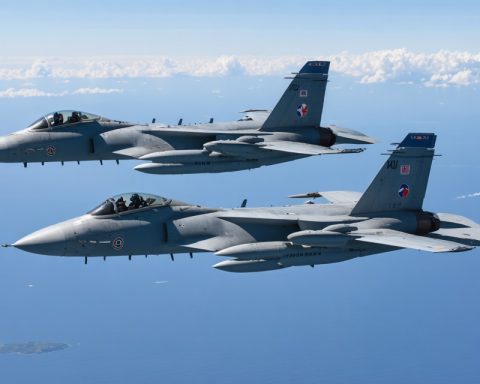- The U.S. Air Force’s F-35 Lightning II pilots enhance their skills in the ‘Bamboo Eagle 25-1’ exercise, highlighting preparation amidst potential Indo-Pacific conflicts.
- The exercise involved over 10,000 troops and 175 aircraft from multiple nations, including Australia, Britain, and Canada, demonstrating modern war readiness.
- Pilots faced realistic and challenging scenarios, emphasizing combat unpredictability and requiring advanced maneuvers and under-pressure refueling.
- The F-35 emerged as a key asset, integrating stealth and intelligence, crucial in potential engagements with China.
- Agile Combat Employment was a focal strategy, dispersing aircraft from varied, minimally equipped locations to enhance resilience and adaptability.
- The exercise underscores evolving strategies and readiness, with adaptability being paramount for future engagements.
Across the vast Pacific skies, a new chapter of aerial prowess unfolds. The U.S. Air Force’s F-35 Lightning II pilots have thrust themselves into the limelight, honing their skills in a dynamic exercise that underscores the looming specter of potential conflict in the Indo-Pacific. With the conclusion of the audacious ‘Bamboo Eagle 25-1,’ the message is clear: preparation is key.
Amidst a symphony of roaring engines and darting silhouettes, over 10,000 troops from multiple nations—a phalanx that included the Royal Australian, British, and Canadian air forces—gather beneath the wide expanse. More than 175 aircraft took to the skies from California to Guam, crafting a vision of modern war readiness.
Unlike typical training exercises, Bamboo Eagle offered something more visceral. Pilots, young in their tenure yet rising to the challenge, encountered scenarios that pushed the bounds of their expertise. Operating out over endless blue oceans, eclipsed by the sun’s relentless glare, they executed complex maneuvers, refueled under duress, and faced ever-evolving missions, echoing the unpredictability of real combat.
The F-35 emerged as the fulcrum of this grand design, embodying advanced stealth and intelligence capabilities. This is not just any aircraft—it’s the ‘quarterback of the skies,’ orchestrating a battalion of allied components with unmatched precision. Its abilities to delicately weave through enemy defenses mark it as a cornerstone in any prospective engagement with China.
Cutting through the Pacific mist, the exercise embraced the Agile Combat Employment concept, deploying aircraft from scattered sites—often lacking full infrastructure—to evade singular target points. This strategy is a testament to resilience, promising a diversely operational force that’s ready to meet any threat on unpredictable grounds.
As the dust settles, the broader implication resonates: the intricate dance of strategy and stealth is evolving, every mission a stepping stone toward fortified readiness. In the vast theatre of potential conflict, adaptability remains the prize, steadier than the wind beneath the F-35’s wings.
Unlocking the Secrets of the Skies: What ‘Bamboo Eagle 25-1’ Reveals About Modern Warfare
Overview of ‘Bamboo Eagle 25-1’
The recent military exercise, ‘Bamboo Eagle 25-1,’ emphasized the U.S. Air Force’s focus on readiness and adaptability, especially concerning challenges in the Indo-Pacific region. This large-scale event highlighted the significance of the F-35 Lightning II and its role in modern combat strategy, underlining the importance of interoperability among allied forces.
How-To Steps & Life Hacks: Enhancing Military Preparedness
1. Interoperability Training: To increase effectiveness in joint operations, forces should develop a set of standardized procedures and protocols, ensuring seamless communication and coordination.
2. Utilizing Multi-Role Aircraft: The F-35’s versatility can be maximized by cross-training pilots in different mission scenarios, allowing the aircraft to adapt quickly to changing battlefield requirements.
3. Agile Combat Employment: Focus on practicing deployments from dispersed locations to reduce vulnerability and improve response times. This includes setting up rapid refueling and rearming processes in remote areas.
Real-World Use Cases: Lessons from ‘Bamboo Eagle’
– Dynamic Environment Simulation: Exercises like ‘Bamboo Eagle 25-1’ simulate high-pressure environments to prepare troops for the unpredictability of actual combat, as seen with the scenarios that F-35 pilots encountered.
– Stealth Operations: The exercise underscores the importance of stealth in contemporary conflicts, with the F-35 playing a crucial role in evading enemy detection and securing strategic advantages.
Market Forecasts & Industry Trends
– Growth in Defense Spending: As tensions in the Indo-Pacific escalate, investments in next-generation aircraft and support infrastructure are expected to increase. The global military aviation market is projected to grow, driven by technological advancements and strategic needs.
– Focus on Stealth and AI: Future trends indicate a shift towards integrating artificial intelligence and enhanced stealth capabilities into military platforms, influencing procurement strategies globally.
Features, Specs & Pricing: The F-35 Lightning II
– Features: Equipped with advanced avionics, radar systems, and stealth technology, the F-35 is designed to dominate the airspace with superior situational awareness.
– Pricing: The unit cost of an F-35 varies based on configuration and country procurement agreements, but it generally hovers around $80 million per aircraft, reflecting its sophisticated capabilities and technology.
Controversies & Limitations
– Cost and Maintenance: The F-35’s development has faced scrutiny over its high costs and maintenance requirements, often leading to debates over budget allocations and prioritization in defense spending.
– Operational Challenges: The complexity of the aircraft can pose logistical challenges, particularly when deployed in austere environments with limited infrastructure.
Security & Sustainability
– Cybersecurity Measures: Protecting the F-35’s systems from cyber threats is paramount, with robust cybersecurity protocols being a critical component of the aircraft’s overall defense strategy.
– Sustainable Practices: While military aviation typically has a large carbon footprint, efforts are being made to incorporate more sustainable technologies and processes in aircraft design and operations.
Pros & Cons Overview
Pros:
– Advanced stealth capabilities
– Excellent interoperability with allied forces
– Superior situational awareness and intelligence gathering
Cons:
– High acquisition and maintenance costs
– Complex logistical requirements
– Dependency on robust cybersecurity systems
Actionable Recommendations
– Invest in Training: Regular and comprehensive training exercises like ‘Bamboo Eagle 25-1’ should be prioritized to ensure readiness and effectiveness in joint operations.
– Focus on Innovation: Allies should continue to innovate in stealth technologies and AI integration to maintain strategic advantages in both defense and offensive operations.
For more insights into military readiness and defense industry trends, visit Defense.gov and Lockheed Martin.
Conclusion
The ‘Bamboo Eagle 25-1’ exercise serves as a powerful reminder of the evolving landscape of military conflict. By continually honing skills, investing in advanced technology, and fostering robust alliances, nations can effectively prepare for and adapt to the complexities of modern warfare.








